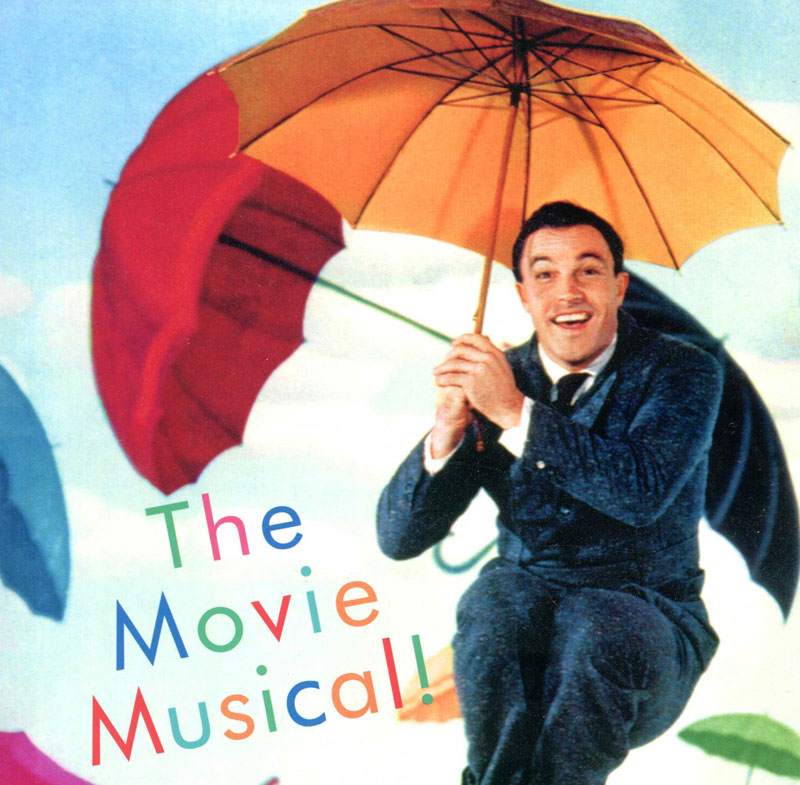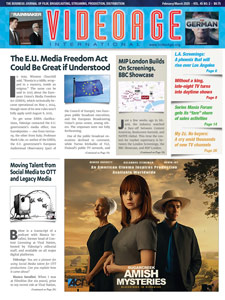How does one define a musical? It is a question that is misleading in its simplicity, but, as American film historian Jeanine Basinger observes, it is a question that leads to
a substantial investigation into the genre. Just because a movie has moments in which its characters sing and dance does not make it a musical. In fact, thousands of films use musical moments to enhance the plot and its meaning, but that does not mean they can be called musical films. There is a tradition to consider, a history and evolution to review, stylistic and formal elements to keep in mind when wondering whether something is a musical. Ultimately, she finds that “[t]he musical remains what it became: a stylized representation of life, where ‘reality’ is presented not through the actions normally associated with everyday life but through musical numbers, the act of singing and dancing.”
In Basinger’s latest book The Movie Musical! (656 pgs., Knopf, 2019, $45), she takes on the gargantuan subject of the musical film. She writes, “This book, The Movie Musical! is an effort to tell the story of that genre ‘from then to now’: its birth, its development, its star performers and plot strategies, and ultimately its evolution into an original American art form.” As she notes early on, there are many books that address key moments and themes throughout the musical film’s history, but with her book she wants to address it all. Thankfully, she is up for the task. Not only is the 84-year-old Basinger the founder and chair of the Film Studies department at Middletown, Connecticut’s Wesleyan University, but she has also authored 11 other books on film, including A Woman’s View: How Hollywood Spoke to Women 1930–1960 and the all-encompassing American Cinema: 100 Years of Filmmaking, the companion book to the 10-part PBS series of the same name.
The Movie Musical! tells “the story of how the Hollywood studio system adapted to the new genre’s possibility when sound liberated the musical universe.” In telling such a vast and interesting history, the book covers decades within Hollywood, countless stars, and memorable performances from the golden days of the American musical to contemporary productions. Basinger’s book is expansive in scope yet accessible to readers, whether they are novices, film experts, or just passionate fans. It also contains plenty of color and black-and-white film stills for those inspired by iconic visuals.
Basinger’s knowledge is encyclopedic, to say the least. Her grasp on the musical’s history is especially daunting once she gets to pointing out the legendary celebrities and personalities of the genre. She runs through family histories and the plotlines of their filmographies for everyone from Al Jolson and Frank Sinatra to Ethel Merman and Doris Day. She also touches on how the pairings of two performers became a business for musicals, highlighting famous Hollywood pairs from Ginger Rogers and Fred Astaire to Judy Garland and Mickey Rooney. As Basinger explains, “The business always understood that ‘boy meets girl’ was a good story idea, so that casting two people who looked good together, seemed to complement each other, and could, of course, stand each other long enough to get through a scene, would be good box office.”
Today, not much remains of the glamour and grandiosity of musicals made in the mid-twentieth century. Basinger remarks, “Once the studio system — the old Hollywood — disappeared, changing into an international system that no longer kept superb musicians, composers, and arrangers under contract, that no longer nurtured real singers and dancers, and that no longer worked hard to locate and create stories that could be musicalized — it became much harder to make a musical.” The musical films that continue to be made tend to follow a tried-and-true method. Often, they are Broadway adaptations, celebrity biopics, or animated features. Which is still the case when looking at the recent list of musical films, which includes adaptations of the Broadway play Cats, a live remake of Aladdin, and a biopic of Elton John, Rocketman. It is no wonder, considering the widespread popularity and revenue involved. Frozen 2, the sequel to the musical blockbuster, became the highest-grossing animated film in history, generating 1.3 billion at the global box office.
Basinger closes her excellent study of musical films by looking at 2016’s La La Land and 2018’s A Star Is Born. La La Land, which was hailed by its swooning critics for its originality, feels flat, according to Basinger, once it is put into perspective against the wealth of its predecessors. “The screen is dead around its protagonists,” she writes of the leads’ performances. With A Star Is Born, the fourth Hollywood version of the film, Basinger is more generous, saying that the film “reminds an audience how really emotional and dramatic a good musical can be.” The success of A Star Is Born leaves Basinger feeling hopeful about the state of the film musical. “They might be back in all sorts of new ways,” she concludes.
(by Luis Polanco)
Audio Version (a DV Works service)












Leave A Comment